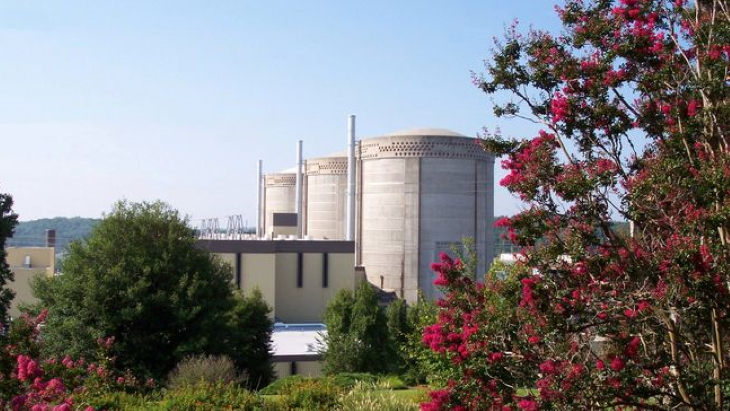
Existing nuclear capacity including Oconee (above) form the bedrock of Duke's carbon plans (Image: Duke Energy)
A new Integrated Resource Plan filed with the Public Service Commission of South Carolina (PSCSC) sets out four portfolios under two pathways to achieve statutory carbon reduction targets. Both pathways have the overarching goal of reaching carbon neutrality by 2050, but with slightly different dates set for the interim target of 70% reduction, with one pathway achieving this by 2030 and the other by 2034. The plan recommends one portfolio - Portfolio 3 - as the most prudent path forward to comply with applicable laws while providing for "a reliable, affordable and smart clean energy transition" that supports economic prosperity.
"This disciplined plan presents a path to build upon the tremendous economic development activity in our state that will contribute to the long-term vibrancy and prosperity of South Carolina, while leveraging tax incentives and credits and operational efficiencies to help keep costs for the state's energy future lower than they would otherwise be," Mike Callahan, Duke Energy's South Carolina state president, said.
Portfolio 3 is an "all of the above" approach which will account for dramatic recent growth in the Carolinas and an accelerating transition to electric transportation while helping to "reliably" exit coal by 2035 and protecting customers from increasing risks and costs as the coal industry declines, the company said.
As well as extending the operating lives of the company's existing nuclear plants and expanding operations at an existing pumped hydro storage facility, Portfolio 3 includes a "diverse and reliable set of solutions" including new hydrogen-capable natural gas resources, energy storage, and SMRs "complemented by fuel-free renewable energy", as well as expanding energy efficiency efforts and demand response options.
"The companies have owned and operated nuclear plants in the Carolinas for over 50 years, generating carbon-free, reliable electricity, as well as supporting well-paying jobs, providing significant tax revenues, and creating many other benefits for their communities," the plan notes. "The companies cannot achieve the energy transition and CO2 emissions reductions targets without nuclear power - their largest generator of zero-carbon electricity. In fact, all viable portfolios to achieving the 70% CO2 emissions reductions target rely on existing nuclear facilities continuing to provide zero-carbon energy through 2030 and beyond."
In addition, it says, new advanced nuclear plants will be critical to achieving carbon neutrality by 2050, and modelling by the company has identified the need for at least 570 MW of new nuclear - two SMRs - to be installed by 2035 "under both pathways and all portfolios" in the plan.
The earliest date the companies could have an SMR in service would be mid-2032, the report finds, which it says is an "an aggressive but currently feasible timeline" if actions are taken to begin the licensing process, including beginning work to secure an early site permit.
Nuclear bedrock
Duke's existing fleet of 11 nuclear reactors at six power stations across the Carolinas has a total generating capacity of 10,773 MWe, and extending the operating lives of these plants is a "bedrock assumption" in every portfolio, the report says. Those units' current operating licences begin to expire in the 2030s, and the regulatory process for each 20-year subsequent licence renewal (SLRs) may take up to four years to complete.
Duke Energy submitted an application for the first of those six power stations - the three-unit Oconee plant - in 2021, and the companies plan to develop and submit an SLR application for a nuclear station roughly every three years, with the remaining submittals tentatively planned for 2024, 2027, 2030, 2033 and 2036.
The Oconee, McGuire and Catawba plants are also being evaluated for major modifications to increase their power output. Uprates to Oconee from measurement uncertainty recapture, resulting in an additional 15 MWe per unit over the 2022-2023 period, have been included in the plan, but other potential uprates would require extensive component replacement and need more investigation into the cost and timing of the potential projects. If implemented, these power uprates would provide additional zero-carbon capacity, the report notes. The Harris, Robinson and Brunswick plants have already undergone extensive uprates.
The PSCSC will now embark on a public regulatory process including a hearing to evaluate the information before issuing an order on a path forward. This is likely to happen in mid-2024, the companies said.
The resource plan will also be submitted to the North Carolina Utilities Commission in the coming days, where a similar but separate regulatory process will take place.